#databox
Explore tagged Tumblr posts
Text
Ontdek hoe Databox, een toonaangevend analyticsplatform, met behulp van AI real-time inzichten levert en rapportages automatiseert vanuit meer dan 100 databronnen. Door data te centraliseren en voorspellende analyses aan te bieden, verbetert het datagedreven besluitvorming. De integratie met Skylead helpt bedrijven naadloos leads te genereren en verkoopprocessen te stroomlijnen, waardoor de productiviteit wordt verhoogd. Maak gebruik van de kracht van kunstmatige intelligentie tools voor slimmere bedrijfsbeslissingen.
0 notes
Text

Man, I sure do enjoy these three (slightly outdated now) Boomboxes.
Credit for Guidebox (cyan, left) and Databox (green, middle) go to my friends!
#All of these are Boombox#there is no Icedagger in this image#If you think you see Icedagger you do not#phighting#art#digital art#reactives#chibis#phighting boombox#boombox phighting#phighting icedagger#icedagger phighting#boombox#icedagger
49 notes
·
View notes
Text

yo fucking heads up e-terrorist, it's me your roommate. ive just been scrolling the crimenet's hottest blacksites and it turns out you missing your last meet with our VR pornodealer tipped off FEDGOV® that you're retaining. They're sending a COPTROOPER™ extraction team to our cyberpad to drain all your cryptocum into their databoxes, we've got ten minutes to arm up and freewheel outta here. grab the keys to your e-bike (electric bike) and don't forget to update your driving drivers, we're gonna have to jailbreak our way through the cyberstreets quicklike if we wanna make it to the safehouse. also do we have anymore hi-nic electrosmokes because I just uploaded my last one
385 notes
·
View notes
Text
payload
"nah, this is too good to be true," the merc-rebel-something mutters. she turns, twiddling the combat knife in her hand and stopping only to point it at you. "you wanna tell me what trap i've walked into, sweetheart?"
you eye the databox, stuffed with weeks and months of upcoming junta plans. and more besides. enough intel to butcher hundreds of their bootlickers, least until they figure out they're compromised.
"i have it -- for my own reasons," you taunt like the bellow of rotten, felled tree. "making my mark, if you have to know."
"is daddy-dictator's special girl staging a rebellious phase in her twenties?" the merc mocks. "smuggle a bunch of data to what sell for tattoo money?"
you didn't plan an answer for a question like this, and it's hard not to just gawk and fumble at your cuffs.
"maybe -- if it's not a trap -- the intel lasts a week," she continues. and besides that, you urge in your own head. "that's the only part with access dates in years. rest is outdated crap."
"w-what do you--"
you shut up when she stalks up, lifts chin with the little blade's point with just enough force to dip it in red.
"you living out some little fantasy right now?" she asks, as much curious as annoyed. "because i really think that'd be a mistake."
it takes a lot not squeal. "i-i'm a valuable hostage, my family will pay well."
"they will," the merc muses, "and i think you knew that." in a glance she's seen right through, smiles at the confirmation you haven't realised you just gave away. "you leaked your convoy's route didn't you? playing hero, thinking you're gonna make us a pretty penny and then waddle back to your parties and soirées."
you buck up above the point of the knife, "you think i like being around them? they're monsters. and i have to pretend to be one, and you have no idea what that does to you."
her brow raised, she stays quiet, listens.
"but i stood up, just like you did. i'm doing what i can."
and she laughs.
"ah-hahaha! oh saints, how many years you been saving up that little speech, sweetheart? or bleeding heart i should say."
"too many," you spit.
"hmm. good answer," she smirks, putting a hand on your shoulder and hoisting you towards her own vehicle. "you're staying restrained."
"b-but i'm helping you!" you gasp.
"your round ass for ransom helps me -- you don't," she makes clear, makes sure to enunciate it with a squeeze that presses into your collarbone. "and i don't trust you, so i'm not interested in giving you the chance to try anything. don't think i haven't killed prettier things than you.
don't think i regretted it either."
31 notes
·
View notes
Text
an item i kinda wish was in subnautica-- a stasis module for the seamoth

literally as it says, it works like the stasis gun. You can shoot a small projectile and get a small bubble or you can charge up and shoot a large projectile and get a large bubble. The bubbles are larger than the stasis rifle itself, but not by much (less than double)
I imagine it'd take similar power costs to the perimeter defense system with its small shock and charged shock.
i have to assume a module like this wasn't added because it would make the stasis rifle kinda useless once you got the module (which i imagine is late-mid game) but to be fair, the prawn has a propulsion canon arm so :/ here's the recipe i'd think it'd be as well

pretty similar to the stasis rifle with; 2 computer chips; 4 magnetite; 1 quartz; 1 titanium. I'd imagine you could only find one through a databox that's in like... the grand reef or blood kelp zones
5 notes
·
View notes
Text
BENEFITS OF FACEBOOK MARKETING FOR YOUR BUSINESS

No matter how many social media apps emerge with brand new features and trends, Facebook will remain one of the top platforms for modern communication around the globe. Connecting the entire human race over the internet, Facebook created various opportunities, especially in the fields of business and marketing. Promising a long-term communication bridge, this platform helps businessmen reach their target audience and generate more leads without acting on prior steps of primitive marketing. In this case, Facebook ads play a vital role where a business can invest in paid ad campaigns and attract more customers into their business. So let's dive deep to break down some points that explain major benefits of Facebook marketing for your business in this complete overview.
Maximum Audience Reach
Why Facebook Ads? Well, according to a global survey, Facebook stands top in terms of the most active users a social media platform could ever gather, with over 3 million active users every month. However, this creates a thriving marketing atmosphere on Facebook, attracting many marketers from different industries. According to official reports, 89% of social media marketers used Facebook to promote their businesses. Facebook ads also feature precise targeting, which helps you display your ads to specific customer bases regardless of the market location and other demographics. This way, you can reach more customers within a small period of time.
Improved Targeting Possibilities
One of the core benefits of Facebook marketing for your business is better targeting possibilities. Facebook ads give an endless number of possibilities for narrowing down your target population. Age, location, interests, activities, and important life events are some of the factors that you could hone down on. You may contact a broad range of individuals in various regions of the globe to boost awareness of your company. However, Meta can only properly target your audience if there is enough Pixel data available. On the other side, you may restrict your focus and follow solely your interests. Advertisers of fitness applications, for instance, may concentrate in on people with a specific interest in running, weightlifting, or yoga. By doing so, you may connect with a population that is more willing to take action.
Exceptional Marketing Options Facebook advertisements might enable customers and income to be restored. You will only earn 25% of the prospective sales in 2023, as 70% of online researchers do not buy. How did we waste seventy percent of sales? Tracking advertisements might help you bring them to your website or wait for them to finish their purchase. The Meta Pixel is thus unparalleled. It lets you target ads to those who have interacted with your company, like shoppers basket adders or website visitors. Using this approach, tailored ads boost website visitors.
Budget-Friendly and Very Scalable
When it comes to benefits of Facebook marketing for your business it benefits any organization, regardless of age or notoriety. To help control your expenses, create a daily or total budget. Additionally, you may improve the efficacy of your Facebook advertising. As your company grows, you may want to increase your investment in Facebook ads to attract more customers. According to Databox, the average cost per thousand views (CPM) for businesses on Facebook in 2023 was $5.61, which is quite low when compared to other platforms. Facebook's average cost per click (CPC) is about $1.68, making it affordable to a variety of companies.
Quick Time To Value The success of the campaign creation and launch process will be dependent upon the method in which you manage your creative work. Within twenty-four hours of posting your ads, Meta will typically authorize them, and you may expect that sales will begin within a few days. In 2022, a poll was done to establish that roughly forty percent of companies witnessed a boost in the efficacy of their Facebook marketing within a short time.
To summarize the benefits of Facebook marketing for your business, you have to understand that Facebook advertising provides several revenue-generating alternatives for businesses. You can use Facebook to communicate with both current and new customers. In this way, ads for goods and services may more effectively reach their targeted audience. This source gives clients easy access to corporate information. Overall, it continues to drive traffic to your website, resulting in a rise in the number of prospective clients.

#social media marketing#meta ads#social media marketing agency#artificial intelligence#indiedev#digital marketing agency#socialmediamarketingagrncy
0 notes
Text
SEO Tools You Need to Know About in 2025
SEO isn't just alive-it's flourishing in 2025. More than ever, business enterprises are investing in getting their websites up at the top of search results. But why does it still hold such sway in the market, and how do the tools have evolved over time?
Why SEO Still Matters It's like constructing a beautiful shop in the middle of nowhere without any signpost to lead the customers to it. That is what a website without SEO looks like. SEO brings in visibility, credibility, and higher conversions.
The Evolution of SEO Tools The evolution of SEO tools, from basic keyword planners to AI-driven analytics, mirrors the complexities of modern-day optimization. Let's go through the advanced tools in 2025.
All-inclusive Keyword Research Tools Finding the right keyword is like finding the magic recipe for success. Following are some of the hot tools leading the charge:
Google Keyword Planner: The Free Essential Google's Keyword Planner is still an indispensable tool for cost-effective marketers. It offers a sense of search volume, trend, and competition.
SEMrush: The Competitive Analysis King SEMrush isn't just a keyword tool; it's your competitive intelligence partner. From keyword difficulty to competitor performance, SEMrush covers it all.
Ahrefs: Unlocking Long-Tail Opportunities For those searching for long-tail keywords, Ahrefs is the treasure chest. Its immense backlink database also gets you ahead with link equity building.
Tools For On Page SEO Making your content readable to audiences and search engines is essential. Here are the tools that you cannot skip:
Yoast SEO: The WordPress Powerhouse Yoast SEO makes WordPress users get meta tags streamlined, readability, and schema markup into one package that is great for beginners as well as powerful.
Surfer SEO: Content Optimization Simplified Surfer SEO closes the gap between data and creativity. It analyzes your top-performing pages, helping you craft content that ranks.
Rank Math: Flexibility for Modern Websites Rank Math provides a comprehensive set of on-page tools including keyword suggestions, rich snippets, and advanced schema features.
Off-Page SEO Essentials Building your website's authority is just as important as optimizing its content.
BuzzSumo: Finding Viral Content BuzzSumo helps you track trending topics and influencers in your niche, paving the way for shareable content.
Hunter.io: Building Strong Backlinks Hunter.io makes outreach easy by finding professional email addresses, perfect for link-building campaigns.
Technical SEO Tools No SEO strategy is complete without addressing technical issues. These tools ensure your foundation is rock solid:
Screaming Frog: Crawling and Auditing Made Easy Screaming Frog is a lifesaver for detecting broken links, duplicate content, and crawl issues.
Google Search Console: Your Free Technical Partner Google Search Console is a goldmine of insight into indexing, ranking problems, and Core Web Vitals.
GTmetrix: Speed Up Your Site Page speed is a ranking factor, and GTmetrix helps identify bottlenecks slowing your site down.
Analytics and Reporting Tools Data-driven decisions form the backbone of SEO success.
Google Analytics 4: The Data Gold Mine With enhanced tracking capabilities, GA4 offers more granular insights into user behavior and campaign performance.
Databox: Streamline Performance Metrics Databox aggregates data from various sources into one dashboard, which makes reporting easy.
AI and Automation in SEO AI is not the future; it is now.
ChatGPT: Boosting Content Strategies ChatGPT can give ideas for blogs, drafts, and even meta descriptions. This saves time and effort.
MarketMuse: AI-Powered Content Creation MarketMuse uses AI to identify gaps in content, suggest improvements, and prioritize topics.
Emerging SEO Trends for 2025 SEO in 2025 is no longer about text and backlinks.
Voice Search Optimization Tools With smart speakers dominating homes, tools like AnswerThePublic are tailoring content for voice search.
Video SEO: Tools for Growing Platforms Like YouTube Platforms like TubeBuddy and VidIQ are crucial for optimizing video content.
Choosing the Right Tools for Your Needs Not every tool is for everyone. Here's how to decide:
Budget-Friendly Options Tools like Google Keyword Planner and Google Search Console deliver results without costing a dime.
Premium Tools for Advanced Strategies Invest in Ahrefs or SEMrush if you’re scaling up and need in-depth data.
Conclusion Mastering SEO in 2025 means staying ahead with the right tools. From keyword research to technical optimization, these tools ensure you’re always a step ahead of the competition. Start exploring today and watch your rankings soar!
FAQs
What is the best free SEO tool for beginners? Google Keyword Planner is an excellent starting point for keyword research.
How do AI tools help in SEO? AI tools like ChatGPT streamline content creation and strategy development, saving time.
Are premium SEO tools worth the investment? Yes, if you're serious about scaling your SEO efforts, premium tools provide unparalleled insights.
Which tool is best for optimizing page speed? GTmetrix is a top choice for analyzing and improving website speed.
What trends should I watch in SEO for 2025? Pay attention to voice search optimization and video SEO as those keep growing.
0 notes
Text
O indicador de negociação TT HQ Support ... https://forexlucro.com/indicador-negociacao-hq-support-resistance-tt?feed_id=24901&_unique_id=6764a91cc351d
0 notes
Text
New software for digital marketers and internet marketers 2024 - 2025

The world of digital marketing is advancing rapidly, with new tools and software reshaping the landscape for marketers. In 2024-2025, we’re seeing an influx of AI-powered platforms, advanced analytics tools, content automation solutions, and enhanced customer relationship management (CRM) systems designed specifically to improve the productivity and effectiveness of digital marketers. Below, we explore some of the standout tools making waves this year and into the next.
Click Here For More Information
1. AI-Powered Content Creation Software
Jasper AI and Copy.ai are leaders in AI-driven content generation. In 2024, new software in this category is taking AI writing to a new level, allowing for automated content optimized by keywords, sentiment analysis, and even voice tone adjustments to match the brand's style.
Key Features:
Real-Time Editing and Tone Adjustments: Generate and refine content with adjustments in tone, style, and target audience alignment.
SEO Optimization: Integrated SEO analysis to ensure content is optimized for search engines from the outset.
Multilingual Capabilities: Adapt content into multiple languages for international audiences, enabling wider reach.
Examples of Emerging Software:
Anyword: An AI-powered platform focused on creating high-converting ad copy, email content, and even landing pages.
CopySmith: A powerful tool that integrates with e-commerce platforms and automates the generation of product descriptions, blog posts, and ad copy.
2. Enhanced Analytics and Reporting Tools
Analyzing and optimizing campaigns with real-time data insights has become essential for digital marketers. New analytics tools, such as Heap Analytics and Funnel.io, are bringing a deeper understanding of consumer behavior and campaign performance by leveraging machine learning.
Key Features:
Behavior Tracking and Predictive Analytics: These tools predict customer behavior and suggest optimization tactics based on data.
Cross-Channel Integration: Connects seamlessly with multiple platforms, from social media channels to Google Analytics and e-commerce platforms.
Customizable Dashboards: Easy-to-use, customizable dashboards that enable marketers to view the most relevant data and generate reports.
Examples of New Entrants:
DataBox: A dashboard software that pulls data from hundreds of sources to display on one screen. Users can set custom alerts for key metrics.
Supermetrics: Specializes in connecting various platforms like Google Sheets, Data Studio, and Excel, allowing for in-depth data analysis and reporting without complex code or integration processes.
3. Social Media Management and Automation Tools
Social media management is vital in modern digital marketing. New tools, like Lately.ai and Hootsuite Amplify, have emerged to simplify the creation, scheduling, and management of content across various platforms.
Key Features:
Content Repurposing: Tools like Lately.ai can transform long-form content into dozens of bite-sized social media posts optimized for different platforms.
Automated Scheduling: Enhanced scheduling tools help marketers plan content weeks in advance.
AI-Powered Analytics: Track and analyze which posts are performing best and why, based on real-time data.
Top New Tools:
Buffer Reply: Enhances customer service through automated responses, unified inboxes, and streamlined social conversations.
Zoho Social: Offers brand monitoring tools and customized publishing schedules with an AI engine that suggests the best times for posts.
4. Customer Relationship Management (CRM) and Sales Platforms
With the increasing need to maintain personalized interactions, CRMs in 2024-2025 are becoming more intelligent, with AI integrations and automation that streamline sales processes and customer relationship building.
Key Features:
Lead Scoring and Automated Follow-Ups: Automatically prioritize and track high-potential leads based on behavior and engagement.
Customer Segmentation: AI-driven segmentation groups customers based on behavioral and demographic data.
Integrated Sales Funnels: From lead acquisition to nurturing and conversion, these platforms help design and automate the entire sales funnel.
Leading New Tools:
HubSpot AI CRM: Already popular, HubSpot’s latest CRM has integrated AI capabilities that predict customer needs and behavior.
Freshworks CRM: Known for its ease of use and robust features, it combines AI-based lead scoring, email tracking, and visual sales pipelines.
5. Ad Optimization Software
Automating and optimizing ads based on real-time data is crucial for digital marketing. In 2024-2025, AI-powered ad tools like AdEspresso and Madgicx offer unparalleled optimization features that help marketers maximize return on investment.
Key Features:
Dynamic Ad Creation and Personalization: AI engines create variations of ads to match audience segments and engagement levels.
Automated Budget Allocation: Smart algorithms automatically shift budgets to the highest-performing ads.
Cross-Platform Campaigns: Manage and optimize campaigns across Google, Facebook, Instagram, and other ad networks from one dashboard.
Top New Software Solutions:
Revealbot: A powerful platform that offers automated rules to control Facebook and Google Ads, pausing low-performing campaigns and reallocating budgets in real time.
Adzooma: Allows digital marketers to monitor and optimize ads across platforms and also suggests optimizations based on performance metrics.
6. Email Marketing Automation Tools
Email marketing remains a cornerstone for digital marketers, with advancements in automation making this channel more effective and personalized. Platforms like Mailchimp and Constant Contact are introducing advanced segmentation, automated workflows, and real-time tracking.
Key Features:
Behavior-Based Triggers: Set automatic email sequences based on specific actions taken by subscribers.
AI-Driven Personalization: Create personalized email experiences by leveraging AI to understand user interests.
Segmentation and A/B Testing: Tools for experimenting with subject lines, images, and copy, targeting different customer segments.
Emerging Tools:
Mailmodo: Enables marketers to create interactive emails, providing users with a rich experience without needing to leave their inboxes.
Omnisend: A powerful email and SMS marketing automation tool that provides customized, cross-channel customer journeys.
7. Video Marketing and Editing Tools
Video content continues to be one of the most engaging formats, and with the emergence of new video marketing tools, creating and optimizing video content has become more streamlined and accessible for digital marketers.
Key Features:
Template Libraries: Pre-built templates for social media, ads, and presentations make video creation faster and more consistent.
AI-Powered Editing: Advanced tools to enhance visuals, remove backgrounds, and add subtitles.
Cross-Platform Publishing: Allows seamless publishing across YouTube, Instagram, and other video platforms.
Top Video Marketing Software:
InVideo: Known for its wide range of customizable templates, InVideo allows users to quickly create professional-looking videos for social media and websites.
Lumen5: An AI-powered video creation tool that helps transform blog posts and articles into video content.
8. SEO and Keyword Research Tools
The SEO landscape in 2024-2025 is shaped by AI and machine learning, with new tools allowing for deeper keyword analysis, search intent recognition, and even competitor analysis.
Key Features:
Competitor Analysis: Compare and analyze competitor content, backlinks, and keyword rankings to find gaps and opportunities.
Search Intent Analysis: Advanced tools help understand user intent behind search queries, allowing for more targeted SEO strategies.
AI-Powered Suggestions: Get actionable insights on which keywords to target, content ideas, and optimization techniques.
Emerging SEO Tools:
SurferSEO: Helps with on-page optimization, suggesting improvements in content length, keyword density, and user intent alignment.
Frase: A tool that combines SEO and content creation, Frase uses AI to research and outline topics for optimized content creation.
9. Chatbot and Conversational AI Software
Chatbots and conversational AI are essential for real-time customer engagement, and new developments are making them smarter, more responsive, and more aligned with customer needs.
Key Features:
Natural Language Processing (NLP): AI-driven NLP improves chatbots’ ability to understand and respond to customer queries naturally.
Multichannel Support: Chatbots that operate across multiple platforms, including websites, social media, and mobile apps.
Lead Qualification and Routing: Bots that can qualify leads and route them to the appropriate sales representative for follow-up.
Top New Software in This Field:
Intercom AI: Enhanced with conversational AI, Intercom provides sophisticated chatbots that engage users, collect data, and qualify leads.
Drift AI: Known for its conversational marketing, Drift’s new tools enable more personalized interactions with customers at scale.
10. All-In-One Marketing Automation Platforms
All-in-one platforms are consolidating many of the tools digital marketers rely on into a single package. These solutions integrate email marketing, CRM, social media, and more into one cohesive experience.
Key Features:
Centralized Data Management: Unified access to customer data for all departments and channels.
Multi-Channel Campaigns: Design and manage campaigns across email, SMS, social media, and more.
Automated Workflows: From lead acquisition to customer retention, workflows handle every stage of the customer journey.
Top Choices for 2024-2025:
Zoho Marketing Plus: An all-in-one suite that integrates CRM, social media, email marketing, and analytics, allowing teams to work seamlessly from one platform.
0 notes
Text

AI-tools voor Marketing Succes
Ontdek de top 6 AI-tools voor marketingsucces! Van het automatiseren van campagnes met HubSpot tot het in realtime visualiseren van gegevens met Databox: deze gids belicht tools als Pipedrive, Lemlist, Hunter.io en Instantly.ai om uw marketing-ROI te verhogen.
0 notes
Text
What Are the Best Digital Marketing Reporting Tools?

In the fast-paced world of digital marketing, tracking and measuring performance is crucial for growth. But what are the best digital marketing reporting tools available in 2024? With so many options, it can be overwhelming to choose the right one. This article will guide you through the top reporting tools, helping you make informed decisions to enhance your marketing strategy.
What is a Digital Marketing Reporting Tool?
A digital marketing reporting tool is designed to help marketers collect, measure, and present their marketing performance metrics. This includes key indicators such as clicks, leads, conversions, and overall ROI. These tools enable marketers to gather data from various sources — like social media, email marketing, paid ads, and website analytics — into a single, comprehensive dashboard.
Key Benefits of Digital Marketing Reporting Tools:
Data Visualization: Present your data using charts, graphs, and tables to make it easily understandable.
Actionable Insights: Transform raw data into insights that can inform decision-making and strategy.
Comprehensive Measurement: Assess the impact of various marketing channels, including organic search, paid search, and social media.
Attribution Tracking: Identify which marketing sources are driving the most clicks and conversions.
Types of Digital Marketing Reporting Tools
Digital marketing reporting tools come in various types, each catering to different aspects of marketing measurement:
Marketing Analytics Software: These tools track user activity on your website, showing how visitors arrive and what actions they take.
Marketing Attribution Software: These tools provide insights into which channels are responsible for the highest converting leads, helping you understand the customer journey better.
Business Intelligence Software: Designed for managers and executives, these tools facilitate data collection, storage, and analysis for informed decision-making.
Data Visualization Software: Ideal for presenting data in a visually appealing manner, making it easier to tell a story with your metrics.
What to Look for When Choosing a Digital Marketing Reporting Tool
Selecting the right digital marketing reporting tool can be complex. Here are some essential factors to consider:
User Access: Ensure the tool supports multiple users, especially if you have a team that needs to collaborate on reports.
Pricing Structure: Be aware of any additional fees for account setup, integrations, and extra users. Understand the pricing structure before committing.
Multi-Channel Support: If your campaigns span multiple channels, choose a tool that can track and manage data from all those sources.
Offline Tracking: If phone calls are a part of your lead generation strategy, opt for a tool that tracks both online and offline interactions.
Best Digital Marketing Reporting Tools for 2024
Here’s our curated list of the best digital marketing reporting tools to consider:
1. Ruler Analytics

Ideal for tracking how marketing impacts revenue, Ruler Analytics captures data from multiple sessions and traffic sources to provide insights into marketing ROI.
Pricing: Starts at £199/month.
2. AgencyAnalytics

Designed for agencies, this tool allows tracking key metrics and building customizable reports.
Pricing: Starts at $10/month with a 14-day free trial available.
3. DashThis
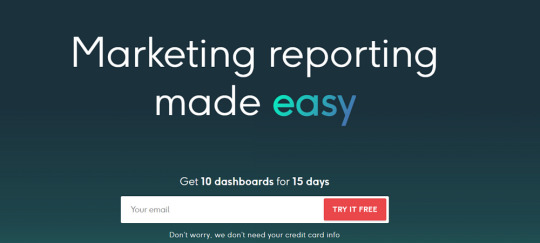
Automates reporting by connecting various data sources and presenting them in dynamic visual formats.
Pricing: Starts at $33/month.
4. Databox
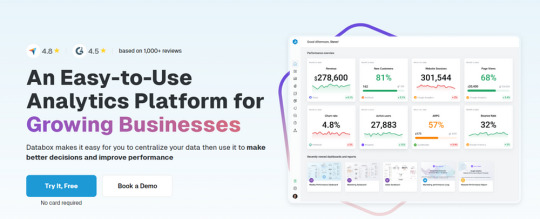
Gathers metrics from various sources into a single dashboard, offering a forever-free account with limited features.
Pricing: Starts at $72/month.
5. Google Analytics

The most widely used analytics tool, providing in-depth insights into user behavior and marketing performance.
Pricing: Free for the standard version; Google Analytics 360 has tiered pricing.
6. Klipfolio

A self-service business intelligence platform for data visualization and marketing reporting.
Pricing: Starts at $99/month.
7. Mixpanel

While primarily a product analytics tool, Mixpanel offers excellent tracking for web and marketing performance.
Pricing: Starts at $25/month.
8. Tableau
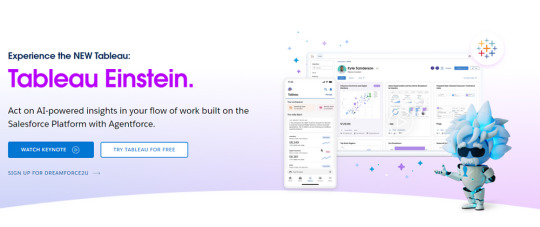
Known for its powerful data visualization capabilities, Tableau is ideal for comprehensive data analysis.
Pricing: Starts at $70/month.
9. TapClicks

A robust analytics solution offering automated reporting and integration with numerous data sources.
Pricing: Starts at $499/month.
10. Two Minute Reports

Streamlines report generation by integrating data from various channels directly into Google Sheets.
Pricing: Starts at $8/month.
11. Whatagraph
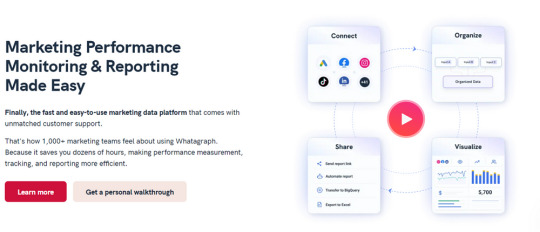
A cross-channel reporting tool that provides real-time insights into marketing performance across various campaigns.
Pricing: Starts at $199/month.
Conclusion
Selecting the right digital marketing reporting tool is essential for effectively measuring your marketing performance and maximizing ROI. By understanding the different types of tools available and considering your specific needs, you can make an informed decision that drives your business forward in 2024 and beyond.
Whether you’re starting your career or looking to advance to higher positions, investing in your education and networking will pay off in the long run. At the Indian Digital Marketing Academy (IDMA), we are dedicated to shaping the next generation of digital marketing leaders. Our comprehensive courses cover over 15 modules, integrating AI tools and providing 100% job assistance to help you launch your career in this dynamic industry. With over 60 hours of live training, hands-on projects, and mentorship from industry experts, you’ll acquire the practical skills needed to excel in the digital landscape.
Ready to take your first step into the exciting world of digital marketing? Explore our Digital Marketing Courses to elevate your career!
0 notes
Text
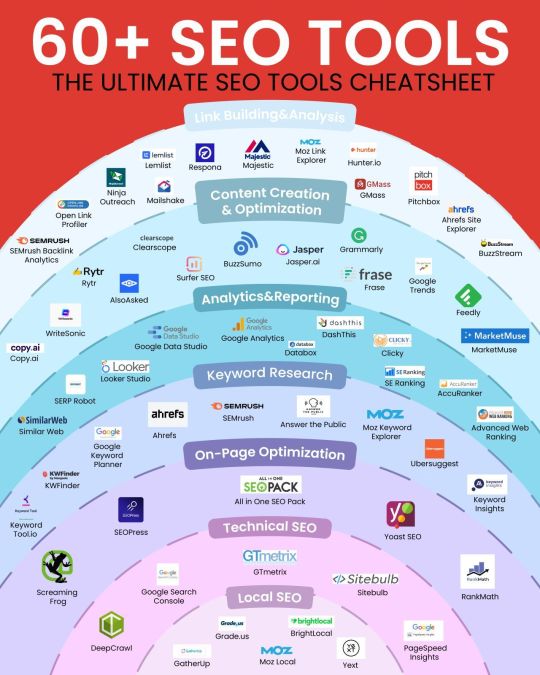
Here’s a list of essential SEO tools to boost your marketing efforts:
⮑ Keyword Research - SEMrush - Ahrefs - Moz Keyword Explorer - Google Keyword Planner - KWFinder - Ubersuggest - KeywordTool .io - Answer the Public - Keyword Insights
⮑ Content Creation and Optimization - BuzzSumo - Feedly - Google Trends - AlsoAsked - Clearscope - MarketMuse - Frase - Surfer SEO - Jasper .ai - Copy .ai - WriteSonic - Rytr - Grammarly
⮑ Link Building and Analysis - Majestic - Open Link Profiler - Moz Link Explorer - SEMrush Backlink Analytics - Ahrefs Site Explorer - Hunter .io - Pitchbox - BuzzStream - Ninja Outreach - Mailshake - Respona - Lemlist - GMass
⮑ Analytics and Reporting - Google Analytics - Clicky - Similar Web - SERP Robot - AccuRanker - Advanced Web Ranking - SE Ranking - Google Data Studio - DashThis - Databox - Looker Studio
⮑ On-Page Optimization - Yoast SEO - Screaming Frog - RankMath - SEOPress - All in One SEO Pack
⮑ Technical SEO - Google Search Console - Sitebulb - DeepCrawl - GTmetrix - PageSpeed Insights
⮑ Local SEO - BrightLocal - Moz Local - Yext - GatherUp - Grade .us
Which tools are your go-to for SEO?
0 notes
Text
Top 5 Latest tools & resources to drive Sales
1. Google Translate
2. Percel Tracker like Aftership
3. Salesloft
4. Pipedrive
5. Databox
#Sales
#ecommercecommunuity
#salestips
#begreat
#onlineincome
#passiveincome
#ecommercebusiness
0 notes
Text
BENEFITS OF FACEBOOK MARKETING FOR YOUR BUSINESS

No matter how many social media apps emerge with brand new features and trends, Facebook will remain one of the top platforms for modern communication around the globe. Connecting the entire human race over the internet, Facebook created various opportunities, especially in the fields of business and marketing. Promising a long-term communication bridge, this platform helps businessmen reach their target audience and generate more leads without acting on prior steps of primitive marketing. In this case, Facebook ads play a vital role where a business can invest in paid ad campaigns and attract more customers into their business. So let's dive deep to break down some points that explain major benefits of Facebook marketing for your business in this complete overview.
Maximum Audience Reach
Why Facebook Ads? Well, according to a global survey, Facebook stands top in terms of the most active users a social media platform could ever gather, with over 3 million active users every month. However, this creates a thriving marketing atmosphere on Facebook, attracting many marketers from different industries. According to official reports, 89% of social media marketers used Facebook to promote their businesses. Facebook ads also feature precise targeting, which helps you display your ads to specific customer bases regardless of the market location and other demographics. This way, you can reach more customers within a small period of time.
Improved Targeting Possibilities
One of the core benefits of Facebook marketing for your business is better targeting possibilities. Facebook ads give an endless number of possibilities for narrowing down your target population. Age, location, interests, activities, and important life events are some of the factors that you could hone down on. You may contact a broad range of individuals in various regions of the globe to boost awareness of your company. However, Meta can only properly target your audience if there is enough Pixel data available. On the other side, you may restrict your focus and follow solely your interests. Advertisers of fitness applications, for instance, may concentrate in on people with a specific interest in running, weightlifting, or yoga. By doing so, you may connect with a population that is more willing to take action.
Exceptional Marketing Options
Facebook Marketing might enable customers and income to be restored. You will only earn 25% of the prospective sales in 2023, as 70% of online researchers do not buy. How did we waste seventy percent of sales? Tracking advertisements might help you bring them to your website or wait for them to finish their purchase. The Meta Pixel is thus unparalleled. It lets you target ads to those who have interacted with your company, like shoppers basket adders or website visitors. Using this approach, tailored ads boost website visitors.
Budget-Friendly and Very Scalable
When it comes to benefits of Facebook marketing for your business it benefits any organization, regardless of age or notoriety. To help control your expenses, create a daily or total budget. Additionally, you may improve the efficacy of your Facebook advertising. As your company grows, you may want to increase your investment in Facebook ads to attract more customers. According to Databox, the average cost per thousand views (CPM) for businesses on Facebook in 2023 was $5.61, which is quite low when compared to other platforms. Facebook's average cost per click (CPC) is about $1.68, making it affordable to a variety of companies.
Quick Time To Value
The success of the campaign creation and launch process will be dependent upon the method in which you manage your creative work. Within twenty-four hours of posting your ads, Meta will typically authorise them, and you may expect that sales will begin within a few days. In 2022, a poll was done to establish that roughly forty percent of companies witnessed a boost in the efficacy of their Facebook marketing within a short time.
To summarise the benefits of Facebook marketing for your business, you have to understand that Facebook advertising provides several revenue-generating alternatives for businesses. You can use Facebook to communicate with both current and new customers. In this way, ads for goods and services may more effectively reach their targeted audience. This source gives clients easy access to corporate information. Overall, it continues to drive traffic to your website, resulting in a rise in the number of prospective clients.
0 notes
Text
Why Travel Blogging Is More Popular Than Video Marketing Now

Explore why travel blogging is more popular than video marketing and how it is a powerful way that provides a unique and smooth opportunity to share experiences through compelling writing in a world dominated by visuals. We belong to a digital landscape, where businesses and individuals are constantly seeking the most effective ways to engage audiences, generate leads, and drive traffic to their websites. Although video marketing has emerged as a powerful tool, the staying power of blogging, particularly in the travel niche, continues to outshine video content. According to a recent survey by Databox, over two-thirds of respondents affirm that blogging generates more leads than video marketing, and this trend is even more pronounced in the realm of travel blogging.
The Enduring Power of Travel Blogging in the Digital Era

The phrase “video killed the radio star” might be true for traditional broadcasting, but it doesn’t apply to the world of blogging. Despite the surge in video content creation, blogging remains a cornerstone of online content marketing strategies. What is a travel blog, what is it? Essentially, a travel blog is a platform where individuals share their experiences, tips, and insights about their journeys. It's a specialized type of blog focused on travel content. Oh, blog what is a travel tool that shapes travel destinations! The continued dominance of travel blogging over video marketing stems from its ability to establish deeper connections, drive sustained traffic, and foster audience trust. Travel blogs have a unique appeal because they provide detailed, comprehensive content that serves as a reliable resource for readers. Travel bloggers often share personal experiences, insider tips, and practical guides that resonate with an audience hungry for authentic, well-researched information. While videos may offer visually engaging snapshots of a destination, travel blogs offer a narrative depth that helps readers plan their trips with confidence. This contributes to the blog's effectiveness in generating organic traffic, leads, and engagement. Travel Blogging: Organic Traffic Powerhouse When it comes to driving traffic to websites, the statistics favor blogging. An impressive 84% of respondents in a study indicated that blogging is more effective than video travel marketing at attracting visitors to their websites. This is particularly true in the travel industry, where readers search for in-depth reviews, detailed itineraries, and personalized recommendations that they can revisit and reference over time. Search engines also favor text-rich content, making blogs more likely to appear in search engine results pages (SERPs) than videos alone. Travel blogs, when optimized with keywords, tags, and SEO strategies, can achieve higher visibility on platforms like Google. This means that blogs can consistently draw in traffic long after the content is published, while video content may have a more limited lifespan in search results. Why Travel Blogging Is More Popular Than Viral Videos Depth of Travel Content: Travel blogging provides the opportunity to create more comprehensive, in-depth content that explores a variety of topics, such as detailed destination guides and money-saving travel tips. Readers can return to these resources repeatedly, making them more evergreen than video content, which may offer less detail and context. SEO Benefits: Search engine optimization (SEO) plays a crucial role in driving traffic to websites. Written content can be optimized with rich travel keywords, meta tags, and backlinks, which improves a travel blog’s visibility on search engines. Videos, while SEO-friendly in their own right, don’t offer the same breadth of optimization opportunities as blogs do. User Engagement: Travel blogs often encourage more direct engagement, with readers leaving comments, asking questions, and sharing their own experiences. This ongoing conversation builds a community around the blog and encourages repeat visits. While videos may spark engagement, the nature of blog content often leads to more thoughtful and interactive discourse. Longevity and Searchability: Blogs have a longer shelf life compared to videos. Once a blog post is published and indexed by search engines, it can continue to attract readers for months or even years. Videos tend to have a shorter period of relevance unless they go viral or are consistently optimized for SEO.
Why Video Marketing Still Matters in Travel Marketing

While travel blogging may drive more traffic and leads, it doesn’t mean that video marketing is ineffective. Videos can be an excellent complement to blog content, enhancing a travel blog’s reach and engagement. Videos can bring a destination to life, providing a dynamic and immersive experience for the viewer. Moreover, video content is highly shareable across social media platforms, where it can reach a wider audience quickly. The key to maximizing your reach in the travel industry is to combine both formats. After creating a comprehensive blog post about a destination, you can amplify its impact with accompanying video content that highlights key experiences or offers a visual overview of the location. Conversely, you can create a robust video first and then cut it into smaller clips for social media, blogs, and other platforms.
Pro Tip: Combining the Best of Both Worlds of Travel Blogging and Video Marketing
To get the most out of your travel content, consider blending blogging and video marketing. By integrating the strengths of both formats, you can maximize your content’s impact and reach a broader audience.

Blog First, Video Second: Start with a detailed blog post that dives deep into the topic. Then, create a video showcasing the destination or summarizing your blog's key points. This helps drive traffic from both search engines and social media. Video First, Blog Second: Alternatively, begin with a captivating travel video and then repurpose it into smaller clips or embed it within a blog post. This strategy can provide a richer, multi-layered experience for your audience.
Navigating Travel Blogging and Video Marketing Hurdles with Evergreen Content

When tackling travel blogging and video marketing, one crucial aspect to consider is the longevity of your content. Travel blogging thrives on evergreen content—posts about timeless travel tips, destination guides, and packing lists that continue to offer value long after their initial publication. These old posts can gain momentum over time as they accumulate backlinks, social shares, and SEO benefits, making them more valuable and relevant as they age. However, video marketing often hinges on viral trends and current events, which can quickly become outdated. Videos that capitalize on trending topics may see a burst of engagement initially, but their relevance often diminishes rapidly, making them less impactful over time. Updating travel blog posts is a relatively straightforward process; you can revise and expand old content to incorporate new information, ensure accuracy, and enhance its usefulness for readers. This ongoing process helps maintain and even improve the post's effectiveness. In contrast, video content, once published on platforms like YouTube, does not lend itself easily to updates. Viewers are also less inclined to engage with videos that are 2-4 years old, making it essential for creators to consistently produce new content to stay relevant. Therefore, while evergreen content in travel blogging can grow in value over time with proper updates, video content requires more frequent fresh production to remain engaging and effective.
Travel Blogging: Ideal for Introverted Content Creators?

For introverted content creators, travel blogging presents an ideal avenue for self-expression and creativity, largely due to its inherent flexibility and independence. Unlike other forms of content creation that may require frequent social interactions or collaborative efforts, travel blogging allows individuals to immerse themselves in their environment and reflect on their experiences in a solitary manner. This suits those who find comfort in solitude, as it provides ample opportunity to engage deeply with their surroundings and document their thoughts and observations in a way that feels authentic and personal. The process of researching destinations, crafting narratives, and curating visual content can be done independently, allowing introverts to manage their energy levels and work at their own pace, without the pressure of constant social interaction. This solitude in content creation can be especially fulfilling for those who prefer a more introspective approach to storytelling. Furthermore, while travel blogging is an excellent fit for introverted creators, content writing itself is not the only option within digital travel marketing. Many aspects of this field allow for solitary work, such as developing detailed itineraries, creating SEO-optimized content, or managing social media accounts from behind the scenes. For those who enjoy the comfort of working alone but still want to explore various facets of travel marketing, content writing can be a great choice. It offers a space to develop and refine ideas without the need for direct, frequent engagement with others. Thus, digital travel marketing encompasses a range of roles that cater to introverted personalities, providing flexibility and scope for solo work while allowing for creative exploration and personal expression.
The Necessity of Rules in Travel Blogging and Video Marketing

Travel blogging and video marketing each demand a specific set of rules and practices due to their distinct nature and objectives. Video marketing, particularly within the travel sector, often requires substantial investment in equipment and careful planning to produce high-quality content. This process involves not only traveling to diverse locations but also mastering the art of capturing engaging footage through various types of photography and video equipment. High-definition cameras, drones, stabilizers, and sound recording tools are essential for creating visually appealing and professional videos. Moreover, the setup fees for such equipment can be significant, adding to the financial commitment needed to effectively market through video. Adhering to technical and creative guidelines ensures that the content stands out and meets the expectations of the audience, which can translate into higher engagement and better marketing outcomes. Conversely, travel blogging, while also related to the travel experience, operates under a different set of constraints and opportunities. Although firsthand travel can enrich a blog, it is not always a prerequisite. Bloggers can leverage their writing skills, research capabilities, and creativity to generate compelling content without necessarily being on the move. A well-crafted blog post can be based on extensive research, personal insights, or curated information from other sources. The primary tools to start a travel blog include a laptop, a strong grasp of SEO, and effective storytelling techniques. The flexibility of not needing to travel extensively can reduce costs and barriers to entry, allowing bloggers to focus on content quality and audience engagement. Finally, while both forms of content creation require adherence to specific guidelines, the nature of these rules varies significantly between video marketing and travel blogging. FAQs: Type of Niche Travel Blog What is Its Real Power! Why are travel blogs popular?Travel blogs are popular because they cater to diverse niches and specific travel needs, offering personalized recommendations and insights that resonate with a wide range of readers. Their ability to address varied interests—from luxury to budget travel—helps attract and engage a broad audience.What makes a travel blog interesting?A travel blog becomes interesting by addressing common pain points, such as budget travel or safety tips, and by focusing on unique niches like off-the-beaten-path destinations or specialized experiences. This combination of practical advice and niche content engages readers and provides valuable, distinct insights.Is travel blogging oversaturated?Yes, travel blogging can be oversaturated, especially when content creators fail to establish a unique selling proposition (USP). Without a distinct angle, standing out in a crowded market becomes challenging.Is travel a good niche for blogging?Yes, travel is a good niche for blogging if you're well-prepared, understand your audience's needs, and assess your own skills and background effectively. Tailoring content to these factors can enhance your blog's relevance and appeal. Conclusion Travel blogging continues to reign supreme over video marketing in terms of driving traffic and generating leads. Its depth, searchability, and ability to engage readers make it a powerful tool for building an online presence in the travel industry. However, travel bloggers and marketers should not dismiss video entirely. By combining the storytelling power of blogs with the dynamic appeal of video content, you can create a versatile and impactful content strategy that leverages the best of both worlds. Read the full article
0 notes
Text
Cracking the Code: Google Ads Success in 2024.
Google Ads—your ticket to reaching potential customers across the vast digital landscape. As we step into 2024, let’s unlock the secrets to maximizing your ROI through effective Google Ads campaigns. Whether you’re a seasoned advertiser or just dipping your toes into the PPC waters, these strategies will propel your success.
Master Ads Keyword Research Effective keyword research goes beyond mere word selection. It’s about understanding user intent and search patterns. Here’s how to crack the code:
User Intent: Dive deep into what users truly want. Are they seeking information (informational intent), researching (commercial intent), or ready to buy (transactional intent)? Target keywords aligned with commercial and transactional intent for PPC campaigns. These users are primed for action. Keyword Magic Tool: Use tools like Semrush’s Keyword Magic Tool. Understand the intent behind each keyword. Prioritize those that align with your campaign goals.
Embrace Automation and Smart Bidding In 2024, automation isn’t just a buzzword; it’s your ally. Smart bidding algorithms optimize your bids based on historical data, user behavior, and context. Let AI do the heavy lifting while you focus on strategy.
Visualize Your Search Ads Search results are getting a facelift. Visual extensions (like images) within search ads are becoming more common. Use them strategically to stand out. A picture is worth a thousand clicks!
Leverage Responsive Search Ads (RSAs) RSAs adapt dynamically to fit available ad space. Write multiple headlines and descriptions, and let Google mix and match them. RSAs increase your chances of showing relevant ads to users.
Quality Score Matters A higher quality score means better ad positioning and lower CPC. Focus on relevance, landing page experience, and expected click-through rate. Improve your quality score to boost efficiency and performance.
Remember, Google Ads is a dynamic puzzle. Continuously test, optimize, and adapt. And if you need expert guidance, reach out to us at Cubic Designz Digital Marketing Agency in Chennai. Let’s crack the Google Ads code together! 🚀🔍
Sources:
Semrush: 13 Google Ads Tips for Better Results in 2024 WordStream: The 5 Biggest Google Ads Trends for 2024 (+6 Predictions) Databox: 20+ Must-Know Google Ads Statistics to Inform Your Strategy in 2024
0 notes